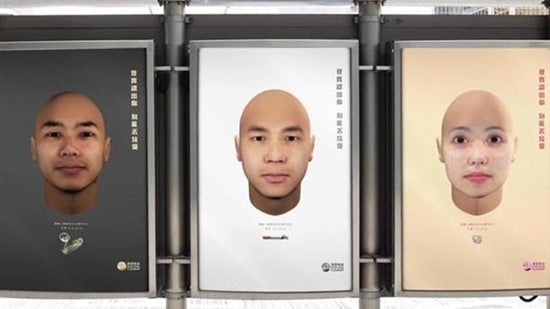Hong Kong used DNA to publicly shame litterbugs on billboards
You’re pretty sure no one saw you do it. It was just that one time, and no one was watching. You hurry through the subway turnstiles and then you see it. It’s a bit off, but you definitely recognize it: It’s your face, digitally remastered on billboards everywhere. The world knows. You spit your gum on the floor and the world knows you did it. Soon, they’ll be coming for you.


You’re pretty sure no one saw you do it. It was just that one time, and no one was watching. You hurry through the subway turnstiles and then you see it. It’s a bit off, but you definitely recognize it: It’s your face, digitally remastered on billboards everywhere. The world knows. You spit your gum on the floor and the world knows you did it. Soon, they’ll be coming for you.
That really did happen in Hong Kong. Well, almost.
The Hong Kong Cleanup Challenge, a non-governmental organization trying to clean up Hong Kong’s streets, recently partnered up with advertising agency Ogilvy & Mather to bring a bit of Big Brother shaming to the city’s denizens. Ogilvy collected trash from locations around Hong Kong and sent the samples to Parabon NanoLabs in the US. The lab analyses DNA samples and creates digital composites of what the person whose DNA they’re sampling might look like. Ogilvy turned these composites into wanted posters which it put up around Hong Kong.
From a tiny DNA sample, Parabon says it can determine someone’s sex, ancestry, skin color, hair color, eye color, freckling, and even face shape. This technology can’t determine how old the litterbugs are—DNA doesn’t change based on your age—but Ogilvy says it took into consideration other factors, such as “demographics based on the type of litter and where it was collected to determine the approximate age of the litterer.”
While Rafael Guida, a creative director with Ogilvy in Hong Kong, said in a release that this campaign “combines a public service message with science,” it raises questions about privacy in public places. Eric Schmidt, when he was CEO of Google, was lambasted for suggesting that “if you have something that you don’t want anyone to know, maybe you shouldn’t be doing it in the first place.” You could make the same argument about littering, which is a crime, but it probably doesn’t warrant the level of public shaming we use for terrorists and murderers.
Ogilvy’s campaign looks a lot like the art of Heather Dewey-Hagborg, who in 2013 used DNA samples from objects left at subway stops in New York and Dublin to create 3D faces of the possible offenders. Ogilvy wasn’t immediately available for comment on the similarity between the two projects.
But who knows, if this campaign takes off, our culture of blaming each other may soon lead to a world that this cautionary tale warned us about: